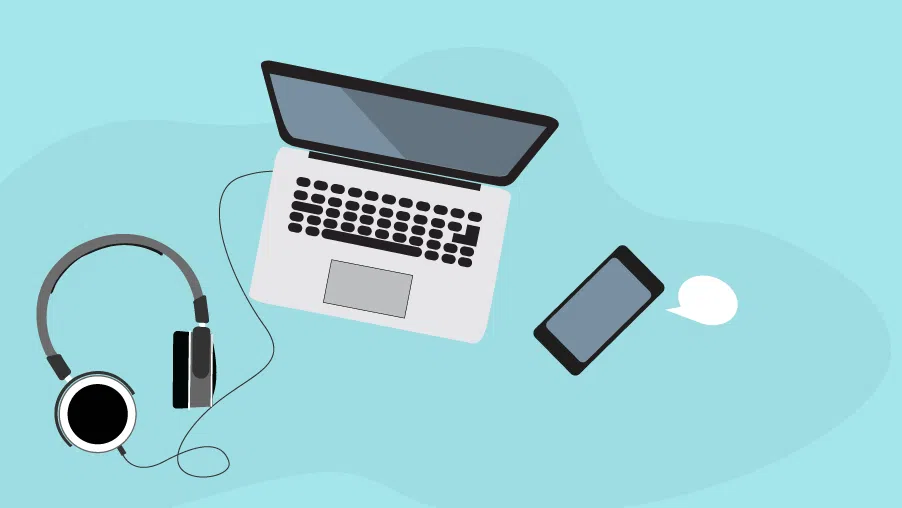What is Omnichannel Customer Service and How Can You Provide It?

What is Omnichannel Customer Service and How Can You Provide It?
When working with today’s hyper tech-savvy customers, an omnichannel approach to customer service is no longer optional. More than ever, consumers expect their interactions with a company to be seamless and accessible regardless of the channel they use – whether it’s email, chat, social media, or phone. But what is omnichannel customer service? And how can you provide it – even with a small customer support team?
What is Omnichannel Service?
Your customer’s experiences should always be consistent and seamless across every channel they use, regardless of whether it’s in-store, social media, or on your company website. This means that your customers can use multiple channels of engagement to seamlessly interact with your brand “from first touch to checkout, support, returns, and beyond.” If they contact you first via chat, they can continue the conversation via email, and vice versa, with no hiccups. And your brand voice and policies have to be consistent across channels.
Does that mean you have to cover every single channel? No. If it doesn’t make sense for your business to provide phone support, that’s ok. If your team is too small to tackle Facebook customer support, that’s ok too (for now).
You don’t necessarily have to provide service on every channel out there, but for the ones that you do use, the customer experience should be a consistent extension of what your customers have come to expect from your brand. Like Forbes says, no matter where a customer contacts you, “the customer journey has to be progressing—no repeating, no steps backwards.”
What Customer Service Channels Do You Need to Serve?
Of course, it’s great if you can offer customer support via email, web chat, social media, AND phone. But that’s not always practical for your business. No matter what, you should offer email – almost all customers use it, and it’s relatively cheap and easy for companies to manage. Beyond that, choose your channels based on a few factors – who your customers are, how complex your product is, and your customer lifetime value.
- Who are your customers? Are your customers hyper tech-savvy? Then they will probably prefer contacting you via chat and social media, so you can focus resources there. If your customers are older, or less tech-savvy, then you want to master phone support.
- How complex is your product? The complexity of your product matters as well. Will you be walking your customers, step by step, through complicated technical instructions? If so, phone and chat support are particularly useful.
- What is your customer lifetime value? Finally, as we explained in a previous post, consider your customer lifetime value. Companies with a very high customer lifetime value can afford to invest more in customer service. That means they can offer real-time support via phone, chat, and social media. If you have a very low customer lifetime value, then you’ll want to stick with email.
How Can You Provide Omnichannel Service?
You have two options for structuring your customer support team to provide omnichannel customer service: training agents to specialize in one channel, or training agents to master multiple channels. The latter option is typically the best fit for all but the largest companies. It’s simply the most efficient use of resources.
But it’s also much more challenging. Each channel offers unique features that will need to be mastered by your customer service agents. Some channels require a different voice and style; social media, for example, can be more informal than email.
Successfully training your agents to deliver exceptional customer service via multiple channels requires a comprehensive, well-paced training program. This includes brand voice training—so your customers will always have a consistent experience with your support team—as well as specialized training programs that take into account the unique needs of each channel.
We typically recommend starting with email – the easiest channel to master – and letting agents master email support before moving on to phone, chat, and social media. That’s because providing customer service via phone, chat, and social media requires agents to be able to answer questions in real time, while email offers the luxury of time. New agents on email support teams can take more time to respond, researching their answers and asking questions of their leads if necessary.
Companies that genuinely embrace an omnichannel approach in their customer service strategy will be able to follow their customers across every channel they use, help progress each unique customer journey, and ultimately create a fantastic customer experience.
What Technology Do You Need?
To do this right, you’re also going to need to have technology systems in place that will allow you to track your customers across all of your channels. This can be especially challenging on social media. For example, Zendesk enables customer service agents to respond to direct FB messages but does not make it easy to respond to comments. Unless you’re using Salesforce, which can be expensive for smaller companies, you’ll have to carefully consider the pros and cons of different technology platforms.
What’s Next?
Omnichannel customer service is just one of many developments in the customer support industry. If your company is struggling to keep up or needs help getting started, then outsourcing your customer support can help. Peak Support based in Cambridge can assist your company in planning and implementing a sustainable, full-scale omnichannel strategy.
If you’re interested in learning more about how outsourcing customer support can help you, don’t hesitate to reach out to us today!


